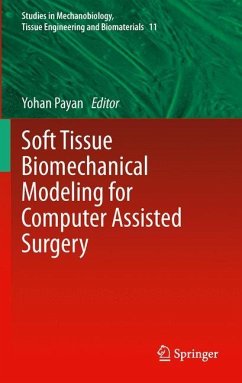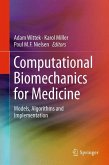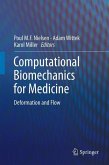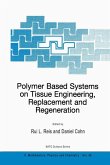This volume focuses on the biomechanical modeling of biological tissues in the context of Computer Assisted Surgery (CAS). More specifically, deformable soft tissues are addressed since they are the subject of the most recent developments in this field. The pioneering works on this CAS topic date from the 1980's, with applications in orthopaedics and biomechanical models of bones. More recently, however, biomechanical models of soft tissues have been proposed since most of the human body is made of soft organs that can be deformed by the surgical gesture. Such models are much more complicated to handle since the tissues can be subject to large deformations (non-linear geometrical framework) as well as complex stress/strain relationships (non-linear mechanical framework).
Part 1 of the volume presents biomechanical models that have been developed in a CAS context and used during surgery. This is particularly new since most of the soft tissues models already proposed concern Computer Assisted Planning, with a pre-operative use of the models. Then, the volume addresses the two key issues raised for an intra-operative use of soft tissues models, namely (Part 2) "how to estimate the in vivo mechanical behavior of the tissues?" (i.e. what are the values of the mechanical parameters that can deliver realistic patient-specific behavior?) and (Part 3) "how to build a modeling platform that provides generic real-time (or at least interactive-time) numerical simulations?"
Part 1 of the volume presents biomechanical models that have been developed in a CAS context and used during surgery. This is particularly new since most of the soft tissues models already proposed concern Computer Assisted Planning, with a pre-operative use of the models. Then, the volume addresses the two key issues raised for an intra-operative use of soft tissues models, namely (Part 2) "how to estimate the in vivo mechanical behavior of the tissues?" (i.e. what are the values of the mechanical parameters that can deliver realistic patient-specific behavior?) and (Part 3) "how to build a modeling platform that provides generic real-time (or at least interactive-time) numerical simulations?"
From the book reviews:
"This is a comprehensive textbook and color atlas of surgery involving the liver, prostate, genitourinary system, uterine structures, and brain. ... I highly recommend this text for surgeons, engineers, and applied mathematicians with interests in robotic surgery using 3D CAS Models with applications to ultrasonic, MR, and CT imaging techniques and how they can be used to improve surgical outcomes." (Joseph J. Grenier, Amazon.com, April, 2015)
"This is a comprehensive textbook and color atlas of surgery involving the liver, prostate, genitourinary system, uterine structures, and brain. ... I highly recommend this text for surgeons, engineers, and applied mathematicians with interests in robotic surgery using 3D CAS Models with applications to ultrasonic, MR, and CT imaging techniques and how they can be used to improve surgical outcomes." (Joseph J. Grenier, Amazon.com, April, 2015)








